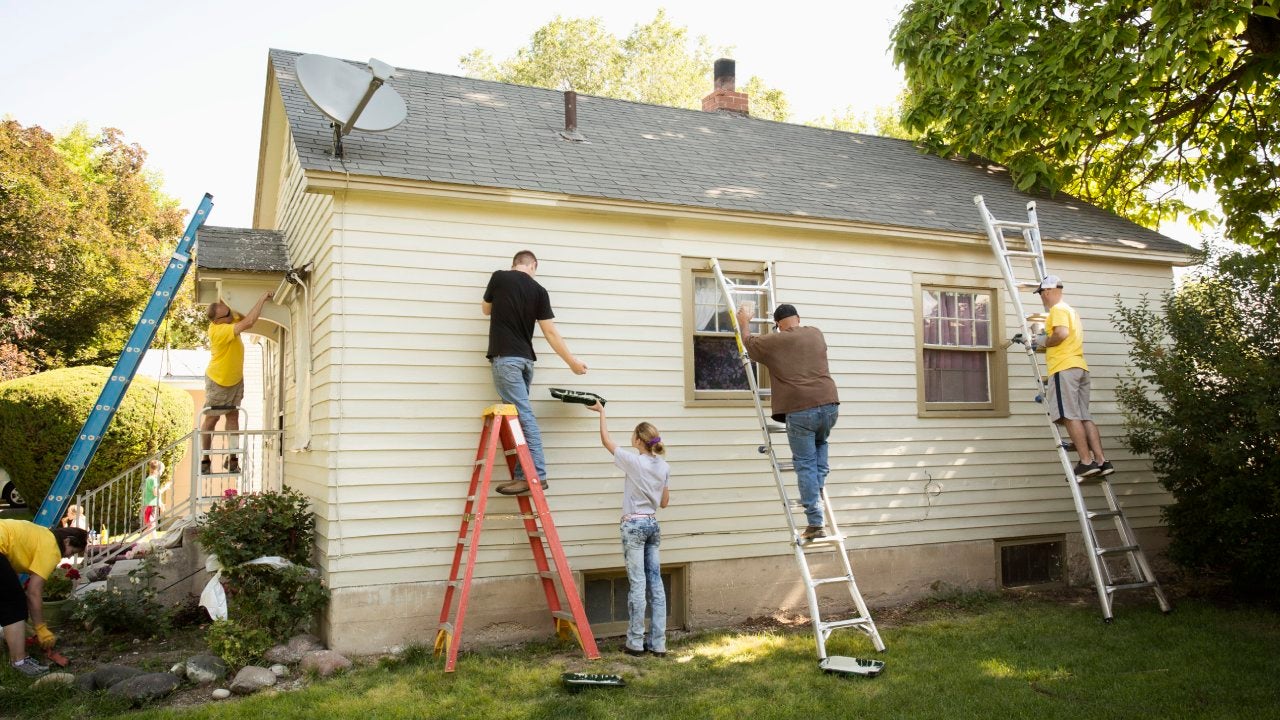Flipping properties can be a game-changer. Many dive in, hoping for quick profits but end up disappointed. Understanding the art of flipping is essential for success. This post breaks down tips for quick turnarounds and high profits for many flips, making you a flipping ninja in the realestatemarket as a flipper.
You’ll learn strategies that seasoned flippers use to maximize their returns. From finding the right property to making smart renovations, each step matters. Avoid common pitfalls and discover how to make your flipping journey smoother. Whether you’re a newbie in the house flipping industry or looking to sharpen your skills, these insights will help you thrive in the competitive market. Get ready to flip with confidence and reap the rewards.
Key Takeaways
-
Understand the basics of house flipping, including market trends and property values, to make informed decisions.
-
Implement quick turnaround strategies, such as focusing on cosmetic upgrades, to enhance property appeal swiftly.
-
Conduct thorough research and select properties that have high potential for profit, looking for undervalued or distressed homes.
-
Utilize essential tools like budgeting apps and project management software to streamline your flipping process.
-
Familiarize yourself with financial metrics and funding options available to maximize your investment and minimize risks.
-
Keep a close eye on renovation costs by creating a detailed budget and sticking to it, ensuring that you stay profitable.
Basics of House Flipping
Market Research
Thorough market research is crucial for successful house flips. Understanding local housing market dynamics helps identify profitable properties. Investors should look at trends in house prices, neighborhood growth, and demand levels to flip properties.
Analyzing comparable sales, or “comps,” provides insight into what similar homes sold for recently, especially if they were flip properties. This data helps set a realistic budget for the flip. Knowing the right price to pay can make or break a flipping project.
Distressed Homes
Distressed homes are often the best candidates for flipping houses. These properties may need repairs or updates, but they usually sell for lower prices. Investors can flip and find great deals in foreclosures and short sales.
Purchasing a distressed home to flip allows for significant profit potential after renovations. Successful home flips often involve transforming these properties into desirable living spaces. The key is to assess the renovation costs accurately before making a purchase.
Financial Literacy
Financial literacy is essential for any real estate investor looking to flip houses. Understanding renovation costs is vital to evaluating profit margins. Investors must calculate how much money they need to spend on repairs and upgrades to flip.
Budgeting for unexpected expenses is also important. Many experienced house flippers recommend setting aside 10-20% of the renovation budget for surprises. This approach prevents financial strain during the project.
Investors should also consider financing options carefully. Traditional home loans may not always be the best choice for flipping projects. Some investors use hard money loans to flip properties, which provide quick cash but come with higher interest rates.
Renovation Planning
Planning renovations effectively can lead to successful home flips. Focus on improvements that add value without overspending. Kitchen and bathroom remodels often yield high returns on investment when you flip properties.
Investors should prioritize cosmetic upgrades like painting and landscaping. These changes can flip a property to make it more appealing to potential buyers. Simple fixes can significantly enhance curb appeal and attract offers quickly.
Selling Strategy
Having a solid selling strategy is crucial after flipping renovations. Timing plays a big role in maximizing profits from house flipping projects. Listing the home when demand is high can lead to quicker sales and better offers.
Marketing the property effectively also matters. High-quality photos and detailed descriptions attract more buyers. Hosting open houses can showcase the home’s features, flip interest, and generate interest.
Strategies for Quick Turnarounds
Efficient Project Management
Effective project management is crucial. It helps streamline renovations. Use tools like Gantt charts to visualize timelines. This allows you to track progress easily. Assign tasks clearly among team members. Each person should know their role. Regular check-ins ensure everyone stays on schedule.
Plan your renovations in phases. Start with the most critical areas first. Focus on kitchens and bathrooms. These rooms often offer the best return on investment. Speed in execution can lead to quicker sales.
Financing Options
Hard money loans provide a fast funding solution. They are short-term loans to flip based on property value, not credit score. This allows quick purchases, which is essential in flipping houses. Traditional loans can take weeks or months to process. Hard money loans can be secured in days.
Consider the costs of these loans carefully. Interest rates are typically higher than conventional loans. However, the speed they offer can flip the extra costs when time is of the essence.
High-Impact Renovations
Prioritize renovations that boost property value significantly. Focus on cosmetic upgrades rather than structural changes. Painting walls, replacing fixtures, and updating flooring can flip and transform a space quickly.
Kitchens and bathrooms should receive special attention. Modern appliances and fresh countertops attract buyers’ interest. Small changes, like new cabinet hardware, can flip and make a big difference too.
Landscaping also plays a vital role in curb appeal. Simple yard clean-up or new plants can flip enhance first impressions without taking much time.
Patience vs Speed
Balancing patience and speed is key in flipping houses. Rushing through renovations might lead to mistakes. Mistakes can cost time and money later on.
Set realistic timelines for each phase of the project. Allow enough time for quality work while maintaining momentum. This balance helps achieve high profits without sacrificing quality.
Puzzle Pieces
Think of house flipping as a puzzle. Each renovation is a flip piece that fits together to create a complete picture. Understanding how each aspect affects overall value is essential.
Identify which renovations will give you the most significant return on investment for a flip first. This strategy aids in prioritizing your efforts effectively.
Research and Property Selection
Neighborhood Analysis
Conducting a neighborhood analysis is crucial. This step helps identify up-and-coming areas. Look for neighborhoods with new developments or increasing demand. Check local amenities like schools, parks, and shopping centers. These features can increase property values over time.
Evaluate crime rates and community engagement as well. A safe neighborhood attracts more buyers. Use online tools to analyze demographic trends. Consider the average income levels and age of residents. This information guides you in choosing the right investment property to flip.
Property Evaluation
Next, evaluate the property condition. Inspect old properties carefully. Look for structural issues that require immediate attention. Assess the roof, plumbing, and electrical systems. These factors affect renovation costs and overall value.
Consider the potential for appreciation post-renovation. Properties in desirable locations often see significant value increases after updates to flip. Focus on homes that need cosmetic improvements rather than major repairs. Simple upgrades like new paint or landscaping can yield high returns.
Networking with Agents
Networking with real estate agents provides valuable insights. Agents have access to listings before they hit the market. They understand the real estate market trends and can offer guidance on pricing strategies.
Build relationships with multiple agents for diverse perspectives. Attend local real estate meetings or join online forums to connect with estate investors. These connections can lead to off-market deals that others might miss.
Market Trends
Stay informed about current market trends. The housing market fluctuates based on interest rates and economic conditions. Monitor these changes regularly to make informed decisions.
Use reliable sources for your research. Websites like Zillow and Realtor.com provide data on property sales and price trends. Analyze this information to determine which properties are worth investing in.
Planning Your Strategy
Create a solid plan before making any purchases. Outline your goals for each investment property. Decide if you want to flip quickly or hold for long-term appreciation.
Consider financing options as well. Understand how interest rates impact your budget and profit margins. Calculate all potential costs associated with renovations and selling.
Essential Tools for Flippers
Renovation Tools
Flippers need the right tools to succeed. Power tools like drills, saws, and sanders are essential for quick renovations. Hand tools such as hammers, screwdrivers, and pliers also play a vital role. Safety gear is equally important. Always wear gloves, goggles, and masks to protect yourself during projects.
A well-stocked toolbox can make a significant difference. Having the right tools on hand helps in completing tasks efficiently. For instance, a good-quality drill can speed up the process of installing fixtures. This efficiency leads to faster flips and higher profits.
Project Management Software
Expert flippers often use project management software. These tools help track timelines and budgets effectively. Programs like Trello or Asana allow flippers to organize tasks easily. They can assign responsibilities and set deadlines for each renovation phase.
Using project management software improves communication among team members. Everyone stays informed about their roles and deadlines. This clarity reduces confusion and keeps projects on track. Proper planning prevents costly delays that can eat into profits.
Design Software
Visualizing renovations is crucial for successful flipping opportunities. Design software or apps can aid in this process. Programs like SketchUp or Houzz allow flippers to create 3D models of their projects. This visualization helps in planning accurate layouts and color schemes.
Design apps also assist in making decisions about materials and finishes. By seeing how different elements work together, flippers can avoid costly mistakes. Proper design planning contributes to quicker sales at higher prices.
Networking Tools
Networking is essential for novice flippers looking to gain experience. Joining local real estate groups or online forums provides valuable connections. These platforms offer insights into current market trends and potential deals.
Attending workshops or seminars can also enhance skills. Learning from experienced flippers can provide tips for successful flips. Building relationships with sellers and other professionals creates more flipping opportunities.
Financial Management
Managing finances is critical in the flip process. Flippers should keep track of all expenses related to their projects. Using budgeting tools helps monitor costs effectively. This practice ensures that profits remain high after each flip.
Establishing a clear financial plan before starting any project is wise. Knowing how much money is available allows for better decision-making during renovations.
Financial Metrics and Funding Options
Key Metrics
Investors must analyze key financial metrics. Return on Investment (ROI) is crucial. It shows how much profit you make compared to the money invested. A higher ROI indicates a better investment.
After Repair Value (ARV) is another important metric. This value estimates what a property will sell for after renovations. Knowing the ARV helps in setting budgets and deciding if a project is worth pursuing.
Cash flow also matters. Positive cash flow means the money coming in exceeds expenses. It ensures that projects remain profitable over time. Tracking these indicators helps investors make informed decisions.
Financing Choices
Various funding options exist for flippers. Traditional mortgages are common but may not be ideal for quick turnarounds. They often come with lengthy approval processes and strict requirements.
Hard money loans offer faster access to cash. These loans focus more on the property’s value than the borrower’s credit score. Investors can secure funds quickly, which is vital in competitive markets. However, interest rates tend to be higher.
Private investors can also provide funding. They may offer flexible terms and quicker decisions than banks. Building relationships with local investors can open doors to more financing opportunities.
Impact on Profitability
Understanding financing choices is essential for profitability. High-interest rates from hard money loans can eat into profits. It’s crucial to calculate potential costs before committing to any loan type.
Lenders often assess the borrower’s track record. A strong history of successful flips can lead to better loan terms. Good credit scores also influence interest rates and lending amounts.
Choosing the right financing option affects overall project success. Investors should weigh their options carefully. Each choice has unique implications on cash flow and return on investment.
Factors to Consider
Several factors impact financial decisions in flipping houses:
-
Interest Rates: Monitor current mortgage rates.
-
Funding Sources: Consider banks, private lenders, or hard money loans.
-
Credit Score: Affects loan eligibility and terms.
-
Market Trends: Stay updated on local real estate trends.
-
Project Timeline: Quick turnarounds require fast funding solutions.
These elements help shape an investor’s strategy in flipping properties.
Managing Renovation Costs
Create a Detailed Budget
Budgeting is crucial in flipping houses. Start by listing all potential renovation costs. Include expenses for materials, labor, and permits. Be specific about each item. For example, if you plan to renovate the kitchen, break down costs for cabinets, countertops, and appliances.
Unexpected renovation costs often arise during projects. Set aside at least 10% of your budget for these surprises. This buffer helps manage unforeseen issues like plumbing or electrical repairs. A well-planned budget keeps the project on track and prevents financial strain.
Source Materials Wisely
Finding the right materials at competitive prices makes a difference in renovation expenses. Research multiple suppliers before making purchases. Compare prices for similar items across different stores. Utilize online platforms to find discounts and deals.
Consider using reclaimed materials when possible. They can reduce costs while adding character to the property. Local salvage yards often have unique finds at lower prices. Building relationships with local suppliers may also lead to better deals and quicker access to materials.
Monitor Spending Closely
Keeping an eye on spending is essential throughout the renovation process. Regularly review your budget against actual expenses. This practice helps identify any areas where costs are exceeding expectations.
Set up a tracking system for all expenditures. Use spreadsheets or budgeting apps for easy management. Update this regularly as you incur new repair costs or make purchases. By staying organized, you can quickly spot trends that may signal overspending.
Understand Repair Value
Knowing the repair value of renovations can guide decision-making. Some improvements yield higher returns than others. For instance, kitchen and bathroom upgrades typically increase housing prices more than cosmetic changes like painting.
Research local market trends to understand what buyers want. Focus on renovations that enhance the property’s value without overextending your budget. This strategy ensures you maximize profits when selling the flipped house.
Factor in Financing Options
Financing plays a significant role in managing renovation costs. Explore various options such as loans or mortgages tailored for home improvement projects. Many lenders offer specific products designed for renovations.
Understanding mortgage approval requirements is crucial before starting work. Gather necessary documents early to streamline the process. Ensure your credit score is healthy, as it impacts loan terms and interest rates.
Risk and Reward Analysis
Market Fluctuations
Flipping properties involves navigating market fluctuations. Prices can change quickly due to economic conditions. For instance, during a recession, property values may drop significantly. This decline affects the potential return on investment (ROI). Investors need to stay informed about market trends. They should analyze local sales data regularly. Understanding the market helps in making better decisions.
Renovation Challenges
Renovation presents its own set of risks. Unexpected issues can arise during the process. For example, mold or structural damage may require costly repairs. These problems can impact the overall budget and timeline. Investors must assess the condition of a property before purchasing it. A thorough inspection helps identify potential challenges early on. Knowing these risks allows for better planning.
Balancing Risks and Rewards
Investors must balance risk with reward when choosing properties to flip. High-risk properties can yield high returns, but they also come with greater uncertainty. Evaluating the after-repair value (ARV) is crucial. ARV estimates how much a property will be worth after renovations. Comparing ARV to the purchase price helps determine if the investment is worth it.
A common approach is to use the 70% rule. This rule states that an investor should pay no more than 70% of the ARV minus renovation costs. For example, if a property’s ARV is $200,000 and repairs cost $30,000, the maximum purchase price should be $104,000. This strategy minimizes financial exposure while maximizing potential profits.
Contingency Plans
Developing contingency plans is essential in flipping homes. These plans help mitigate risks during the renovation process. Investors should set aside extra funds for unexpected expenses. A good rule of thumb is to allocate 10-20% of the renovation budget for contingencies.
Having a backup plan for selling the property is wise. If the market shifts or renovations take longer than expected, alternative strategies may be needed. Renting out the property temporarily could provide income while waiting for a better market condition.
Key Considerations
-
Assessing Risks: Always evaluate potential risks before buying.
-
Understanding Numbers: Know your ARV and renovation costs.
-
Planning Ahead: Create contingency plans for unexpected challenges.
Maximizing Profitability
Strategic Planning
Strategic planning is vital for flipping properties. It involves setting clear goals for each project. Buyers respond well to well-defined marketing efforts. These efforts should highlight the property’s best features. Create a timeline for renovations and marketing. Stick to this timeline to keep the project on track.
Using social media can attract potential buyers quickly. Posting before-and-after photos can generate interest. Consider using local real estate platforms to reach more people. This helps create buzz around the property.
Curb Appeal
Curb appeal plays a significant role in attracting buyers. First impressions matter in real estate. Simple landscaping can enhance the exterior of the property. Adding fresh paint or new siding can make a big difference too.
Investing in outdoor lighting can create a welcoming atmosphere. Small updates, like new house numbers or a stylish mailbox, also help. These improvements can significantly influence buyer interest. Properties with good curb appeal often sell faster and at higher prices.
Negotiations
Negotiation skills are crucial during the sale process. Effective negotiations can lead to maximum purchase price outcomes. Start by understanding the current market conditions. Research similar properties in the area to know your competition.
Be prepared to justify your asking price with facts about your renovations. Highlight unique features that set your property apart from others. Listen actively to potential buyers’ concerns during negotiations. This shows you value their input and builds trust.
Use this information to address any objections they may have. Offer flexible terms if necessary, but stay firm on essential points. This balance will help secure a favorable deal while maintaining profit margins.
Market Conditions
Understanding market conditions is key for profitability. Monitor trends in your area regularly. Pay attention to factors like housing demand and interest rates.
This knowledge allows you to adjust your strategy accordingly. If the market is hot, you might increase your price point slightly. In a cooler market, it may be wise to lower expectations for quicker sales.
Staying informed about these changes can unlock new opportunities for profit.
Final Remarks
Flipping houses can be a lucrative venture if you know the ropes. You’ve learned about the basics, strategies, and essential tools to boost your profits. Understanding financial metrics and managing renovation costs is crucial. Balancing risks and rewards can set you apart from the competition.
Now, it’s time to put this knowledge into action. Start small, stay informed, and keep refining your approach. Your success in flipping houses hinges on these insights. So, roll up your sleeves and dive into the exciting world of real estate. Remember, every flip brings you closer to mastering the art of flipping. Let’s make those profits soar!
Frequently Asked Questions
What is house flipping?
House flipping involves buying a property, renovating it, and selling it quickly for a profit. It requires market knowledge and strategic planning to maximize returns.
How can I find properties to flip?
Look for distressed properties through online listings, auctions, or networking with real estate agents. Consider areas with high demand and potential for appreciation.
What are the most important renovation tips?
Focus on high-impact areas like kitchens and bathrooms. Keep renovations within budget and ensure they align with buyer preferences to enhance resale value.
How do I finance a house flip?
Options include personal savings, hard money loans, or traditional mortgages. Choose financing based on your timeline and risk tolerance.
What metrics should I track for profitability?
Monitor your purchase price, renovation costs, and selling price. Calculate the return on investment (ROI) to evaluate the success of your flip.
How can I manage renovation costs effectively?
Create a detailed budget before starting work. Use reliable contractors, prioritize essential repairs, and avoid unnecessary upgrades to keep costs down.
What are the risks of house flipping?
Market fluctuations, unexpected repair costs, and time delays can impact profitability. Conduct thorough research and maintain a financial cushion to mitigate these risks.
 Subscribe to our podcast
Subscribe to our podcast 




